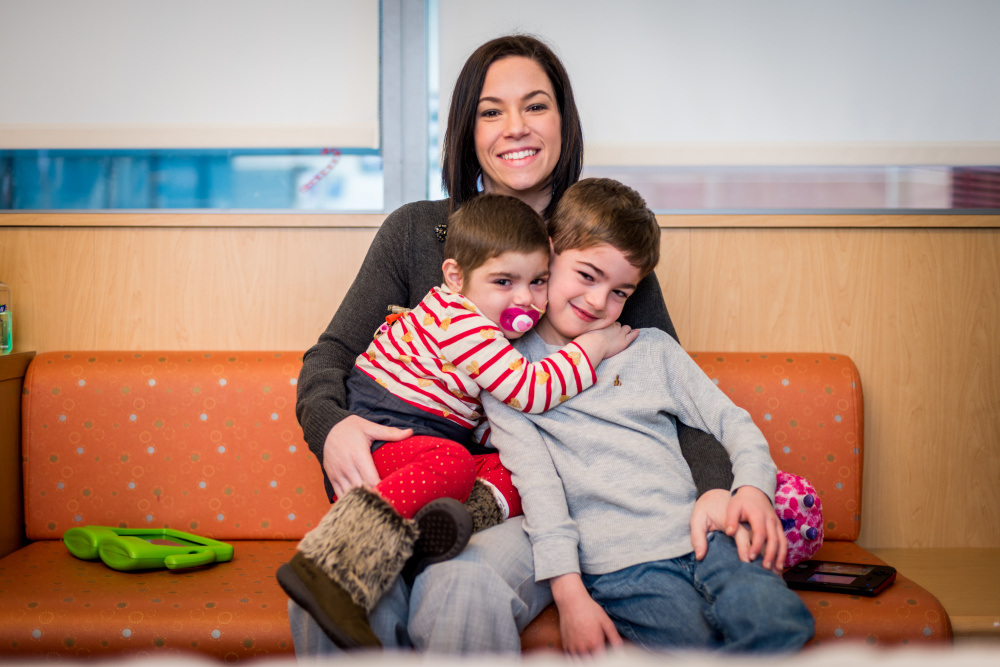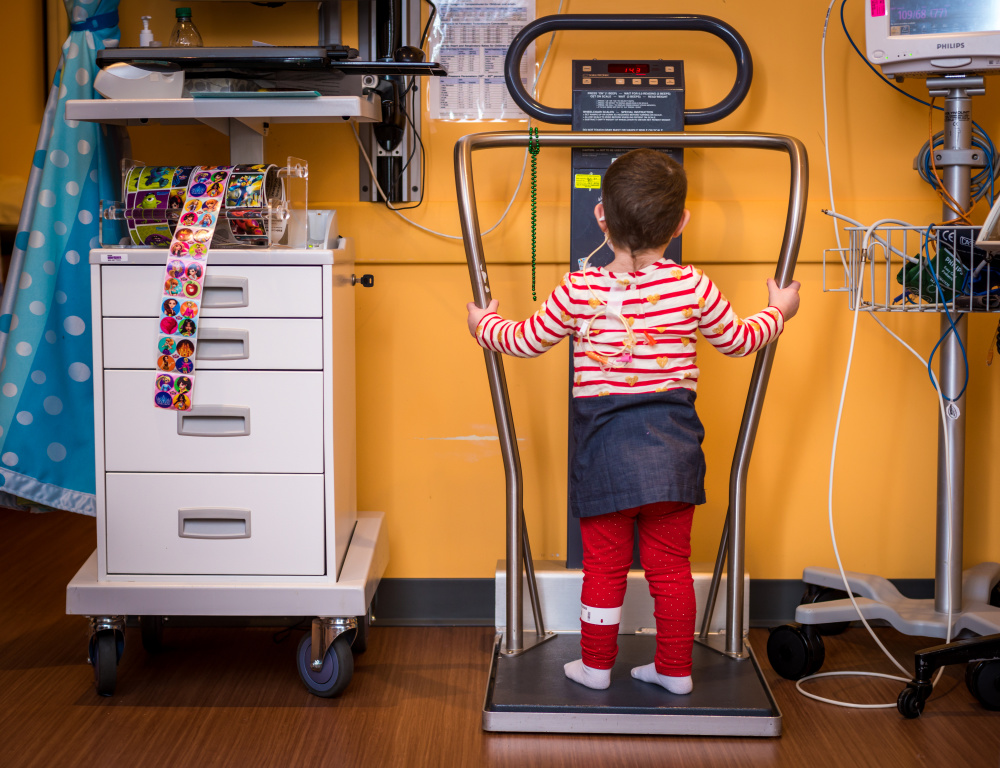
On September 24, 2015, in a sixth floor room at Boston Children’s Hospital, 5-year-old Logan Lesselroth pressed the button that started the transfer of his newly harvested blood stem cells to his 3-year-old sister, Gianna.
“This,” Gianna told him, “is a gift from your body.”
The path to that moment and the stem cell transplant’s potential to cure Gianna of her relapsed leukemia was anything but straightforward. Logan has a genetic condition called medium-chain acyl-CoA dehydrogenase deficiency (MCADD), which makes it difficult for his body to convert sugar to energy. Would his metabolic disorder be passed to Gianna? Would the disorder make it too risky for Logan to have his stem cells harvested?
Read more:
Diagnosed with acute lymphoblastic leukemia at the age of 4½ months, Gianna achieved a remission that lasted two years. In May 2015, the leukemia was back. With that, Michael and Marissa Lesselroth sought options for their daughter in their home state of Florida and beyond. “We talked to her doctors in Florida, and they agreed that coming to Dana-Farber/Boston Children’s Cancer and Blood Disorders Center was the best choice for Gianna because they offered a lot of treatment options for relapsed leukemia,” Mike Lesselroth says.
Lewis Silverman, MD, clinical director of Dana-Farber/Boston Children’s Hematologic Malignancy Center, recommended that Gianna first try a chemotherapy clinical trial, followed by a stem cell transplant if her leukemia went into remission. If that didn’t work, then enrolling in a clinical trial of CAR T-cells, a promising new immunotherapy, could be an option.
Marissa and the children moved temporarily to suburban Boston, where Marissa has relatives, and Mike began traveling back and forth between Massachusetts and his county government job in Florida. Logan enrolled in kindergarten in Tewksbury, Mass.

Treating Gianna’s relapsed leukemia
Children like Gianna are usually treated with standard chemotherapy agents at the time of relapse, although many do not fully respond to these agents. Gianna enrolled on a trial that tested the addition of the drug everolimus (approved for use in other types of cancer) to the standard chemotherapy treatment for relapsed leukemia. “Relapsed leukemia cells are often resistant to many chemotherapy agents. Everolimus and other drugs like it have been shown in our laboratories to reverse this resistance, leading to more effective killing of the leukemia cells by these agents,” Silverman says. One month later, Gianna’s leukemia was once again in remission.
The time for stem cell transplant, the next recommended therapy approached, and, with it, questions around Logan’s condition – and the potential risks for both Logan and Gianna. Enter Olaf Bodamer, MD, PhD, FACMG, associate chief of genetics and genomics at Boston Children’s. He first determined that infusing Gianna’s bone marrow with her brother’s hematopoietic (blood) stem cells would not put her at risk of developing his metabolic disorder, which is associated with the liver. With the stem cell transplant, Bodamer says, “only the engrafted bone marrow cells would carry Logan’s genes.”
To alleviate any potential risk to Logan that he would develop hypoglycemia – low blood sugar — from the stress of the cell-harvesting procedure or the fasting typically required before any surgery, the boy received an intravenous sugar water solution before and during the operation.

While his parents and doctors worried about potential risks to Logan’s health, the kindergartner had other concerns.
“I was scared it was going to hurt,” Logan says. “Now I’m happy I was able to help my sister.”
“It was scary because they hadn’t used a donor with MCADD before,” Marissa says. “They were hopeful it wouldn’t be too bad on Logan. We know Gianna’s cancer is aggressive, and it already returned once. We wanted to go with the best foot forward and get rid of it.”
Learn more about:
That’s exactly what Steven Margossian, MD, PhD, Gianna’s transplant doctor, believes has happened.
“If it was more than a minimal risk for Gianna’s brother because of his underlying condition, we would have used donated umbilical cord blood without hesitation,” Margossian says. “The transplant went phenomenally well. With a related donor, you have less likelihood of developing graft versus host disease. The new immune system is more in sync with her body. We assume she’s cured, and we’re monitoring her for late effects of her treatment.”
Now, the Lesselroths wait out the nine months of isolation that follow a stem cell transplant with a related donor. As Gianna’s immune system reconstitutes itself, they cannot have guests indoors, but she can see other people outdoors. Once Logan’s school year ends, the family will return to Florida.
“Moving up here and being away from home, we didn’t have a chance to think about it. Now the feelings have set in,” says Marissa, who has not been back to Florida since arriving in Boston. “I feel relieved, but it’s still scary. Deciding to use Logan as Gianna’s donor was a very hard decision. I’m thankful that Gianna is doing well, and Logan was a lot stronger than I ever imagined. The care Gianna has received while being here in Boston is pretty special. We are so grateful to have such a caring and compassionate medical team looking after our little girl.”


Great story of a brother helping his sister.
Same as me 15 years ago this coming Sunday May 1st, I was diagnosed with CML as an adult at 46, and my brother, Kevin donated his matching bone marrow while under the care of Dr. Joseph Anton & Dr. Cory Cutler I had no graft versus host disease issues after transplant but my cancer not as aggressive as Gianna’s leukemia.